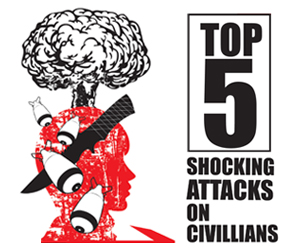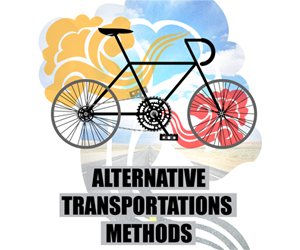
Americans are known for their creativity and innovation. In fact, it has been said by futurists that Japan may out manufacture US, but they will never out innovate them. Recent statistics in a Wired survey (2012) showed that 9 out of 10 of the most innovative companies in world are US companies. In fact in a slightly broader spectrum, 44 of 50 of the most innovative companies around the world are US companies.
What is Creativity? Is it different from Innovation?
Creativity is the ideation of a thought, while innovation is the realization of the idea. The Partnership for 21st Century Skills calls for creativity and innovation as one of the essential skill sets of future citizens. And, while we do not traditionally have a Creativity Room in our schools, the education ministries around the world have a mandate to instill the skills of creative thinking to foster a never-ending stream of innovations.
There is a myth that says, we can’t exactly define creativity, but we know it when we see it. While that may be true in one sense, there are four elements often examined to identify creative ideas, products and performances. Going deeper into an understanding of the discrete skills of creative and innovative thinking, there are four areas that impact on the overarching category of creativity and innovation: 1) Fluency; 2) Flexibility; 3) Elaboration; 4) Originality. (E. P. Torrance, 1958).
- Fluency is the ability to generate a steady flow of ideas in a brainstorming session. Alex Osborn coined the term “brainstorm.” The flow of brainstorming may follow a predictable fluency pattern as depicted in Figure
below (Fogarty, R., 1994)
| Fluency-Flow of Ideas (Brainstorming) |
| 1. Initial Burst of Ideas2. Anxious Pause3. Association by Piggybacking
4. Silly Ideas 5. X-rated Ideas 6. Novel Ideas |
Fluency is the brainstorming process that produces a flow of ideas. Typically, there is a burst of ideas, followed by an anxious pause. Then, looking over the list and associating to previously stated words, more ideas are added. Often, these ideas take on silly to the point of outrageous as creative risk-taking prevails. More times than not, even an X-rated flavor appears, as the flow goes random. Somewhere along the way, or at the point of a nearly exhausted stream of ideas, novel ideas emerge. There is no censorship in the brainstorming phase. Everything counts. The critical examination comes later.
Fluency Exercise: How many foreign language words can you think of in 2 minutes? What was your most successful strategy?
- Flexibility is the ability to shift gears, make that right angle turn to a new idea, or make that tight U-turn that literally takes the original ideas in a drastically new direction. Flexibility in thinking is having a number of very different ideas, exploring diverse possibilities. The typical example of flexibility in thinking is illustrated with problem of disgruntled residents in a new high rise building. The elevators were too slow and after brainstorming all kinds of alternatives, the final solution proved to be a result of thinking outside the box. Mirrors were installed on all the walls by the elevators on every floor, and as predicted, most people stopped complaining as they are preoccupied by looking at themselves in the mirrors and were no longer annoyed by the delays. Far-fetched? Absolutely, but also quite innovative don’t you think?
Flexibility Exericse: Imagine at least five different ways to resolve the problem of identity theft, an ever-increasing cyber challenge of 21st Century.
- Elaboration is signaled by defining details, visible embellishments, fine-tuning and fussiness. Elaboration is finishing the product or performance with spit and polish, that last minute touch that gives a splendid flourish and the elegance of a masterpiece. Enhancing a fashionable outfit with a statement belt, or an exquisite scarf that brings the look alive speaks to the element of elaboration. Similarly, in the classroom, elaboration is often addressed when working with word choice, adjectives and adverbs to enhance the emerging mental image. Also, with the simple question that begs for details in oral language explanations, “Tell me more” will encourages one to extend his or her creative thinking.
Elaboration exercise: Draw one circle, large, medium or small and transform that simple shape into something elegantly recognizable. Use broad strokes to craft the image and then add detail after detail after detail until the intended object emerges brilliantly on the page.
- Originality is marked by its signature uniqueness. The product or innovation is new, novel, extraordinary, distinguishable from the lot. It stands out! A recent experience at a formal affair showcased originality in all its glory. After guests were served their cocktails, they passed by tables of delicate hors d’oeuvres. At one station, there were small dishes filled with finely chopped, raw vegetables. The server asked for my selections, briskly plucked them out with his ice tongs, and placed them in a martini shaker, with my dressing of choice. He then placed the lid on the top of the shaker and fashionably shook the “martini” and “poured” it into a sparkling, stemmed martini glass. The final garnish for my “martini salad” was the cocktail fork, as he handed me his creation.
Originality Exercise: Think about an unusual, original, outstanding, genius-level way to carry all of “summer beach stuff (book, sunglasses, brimmed hat, ipad, cover up, brush, sun guard, ipod, and flip flops, bottle of water, ball, float, and beach towel) to the shore.
Creativity is the premier skill and the overriding mission for 21st Century learners. All students ought to learn the tools of thinking attitudes of courage, courageous and a natural and unbreakable will to create. Exercise the 4 steps in your school projects today.
Adapted from http://www.p21.org/news-events/p21blog/1118


















